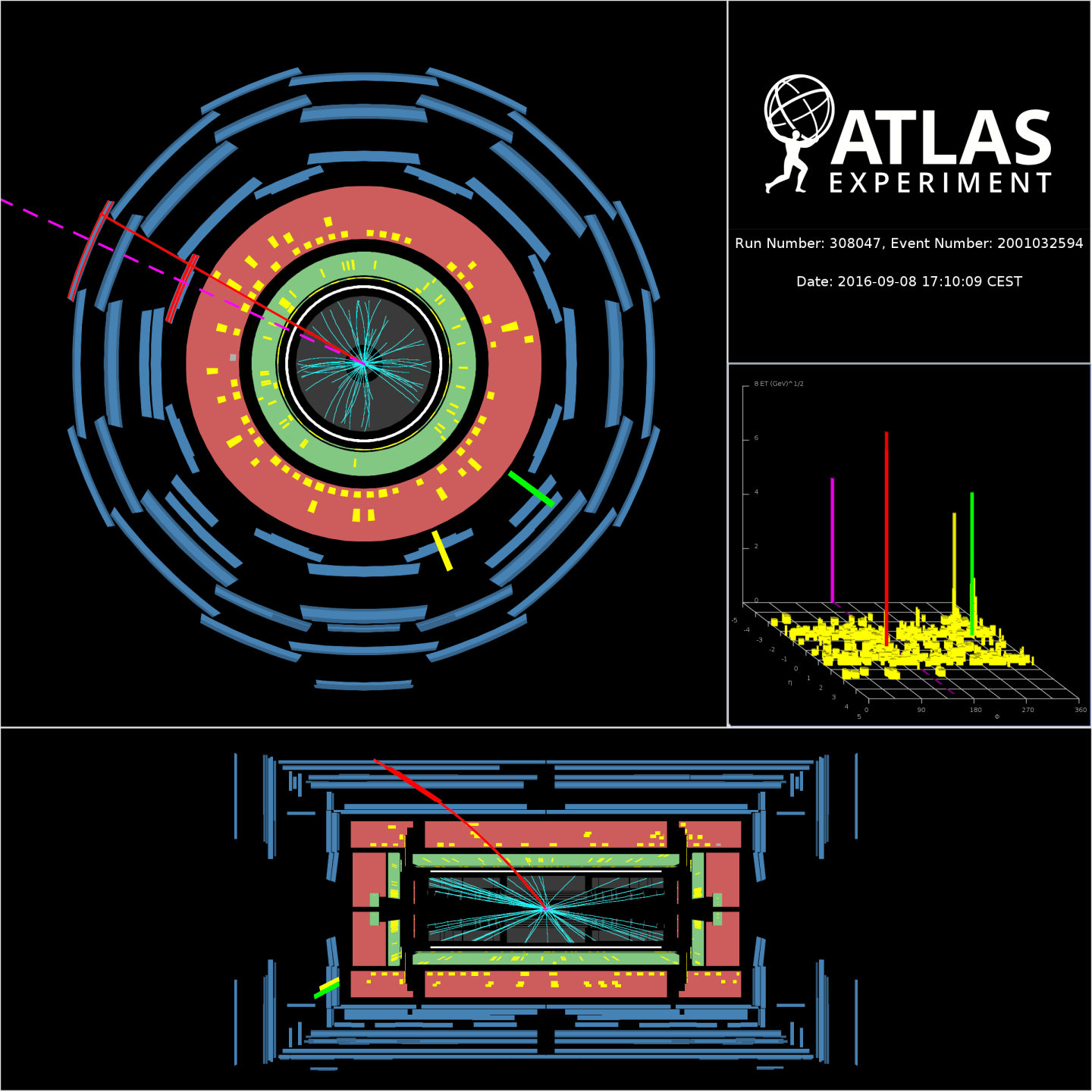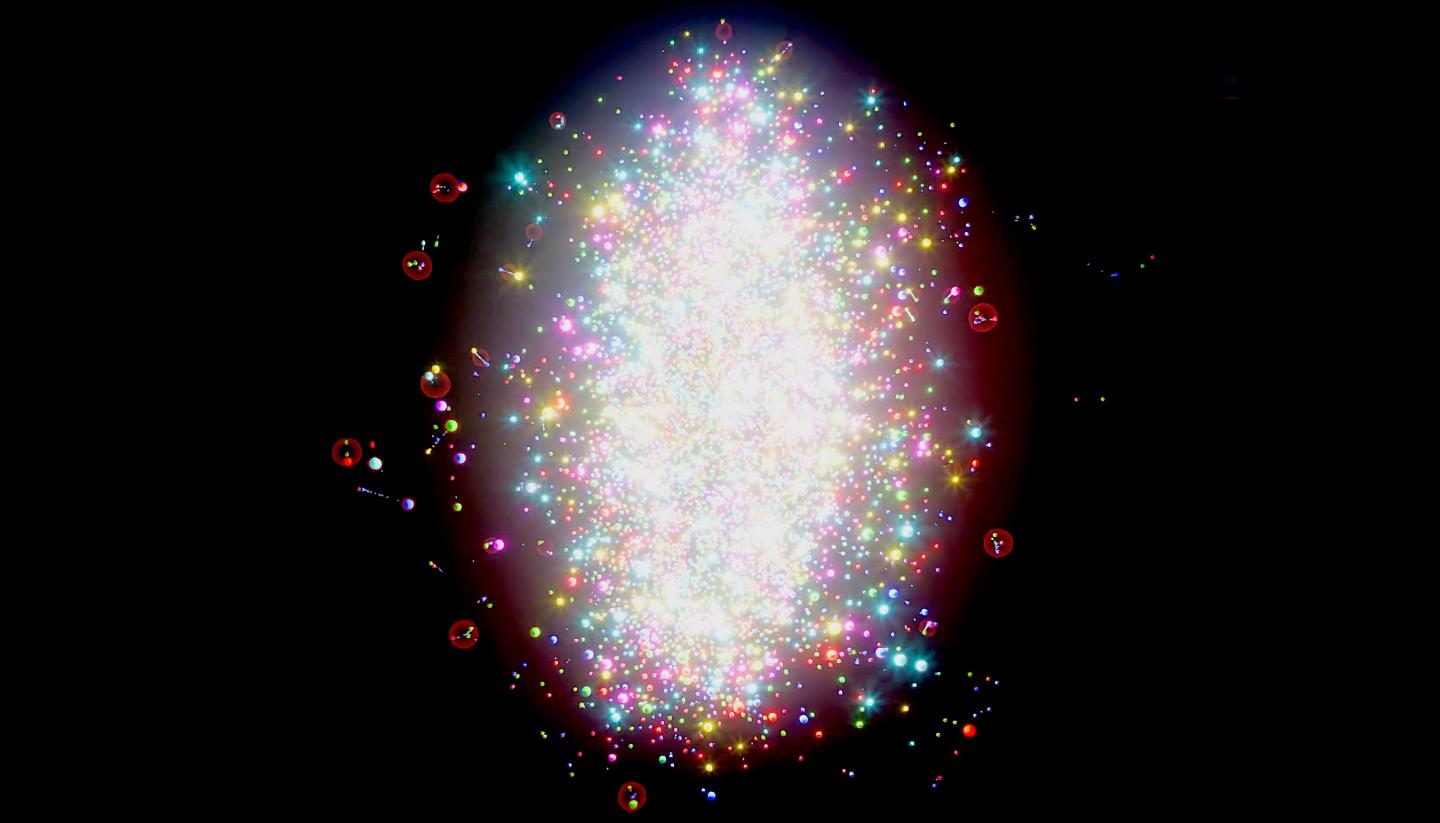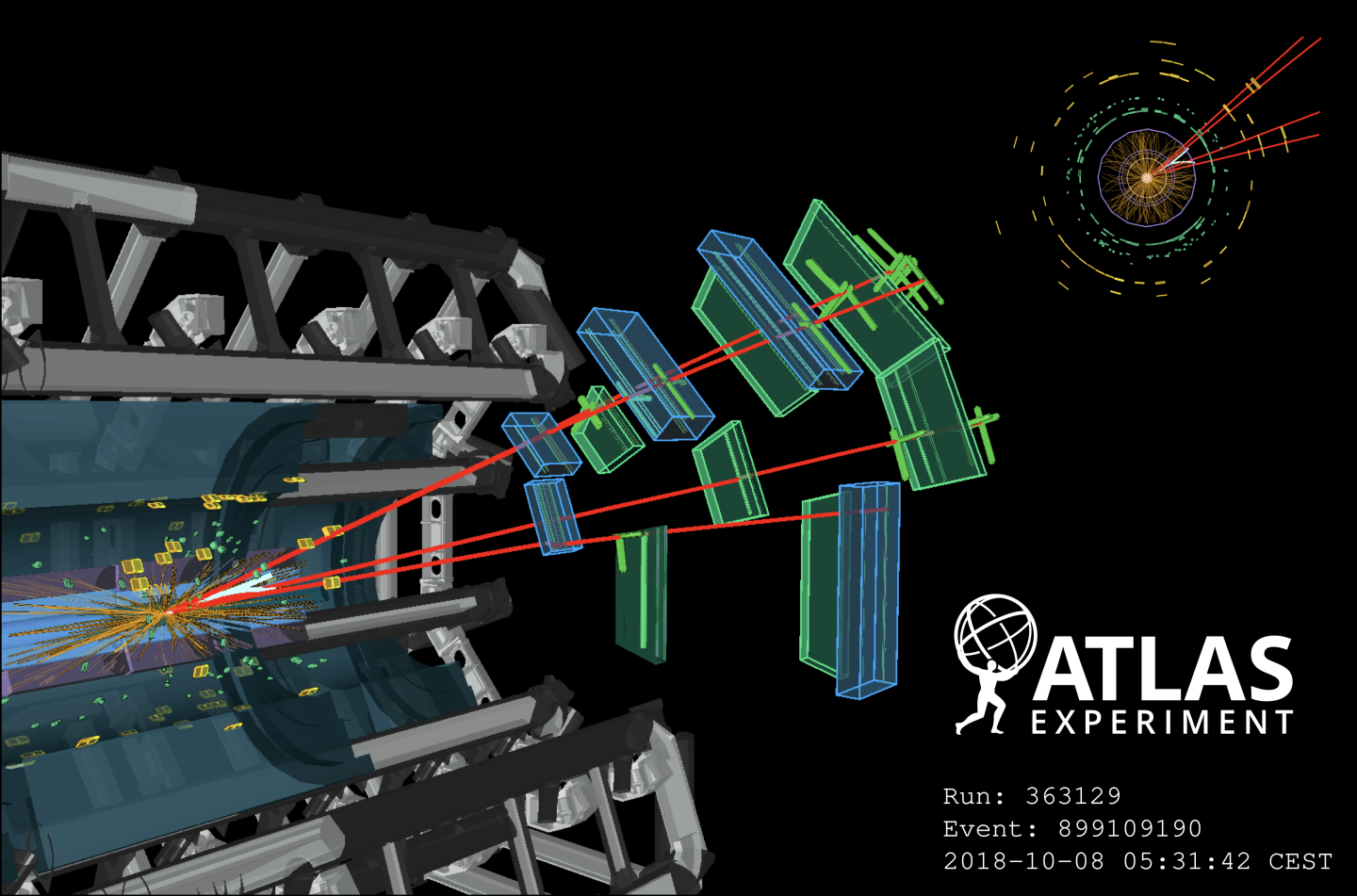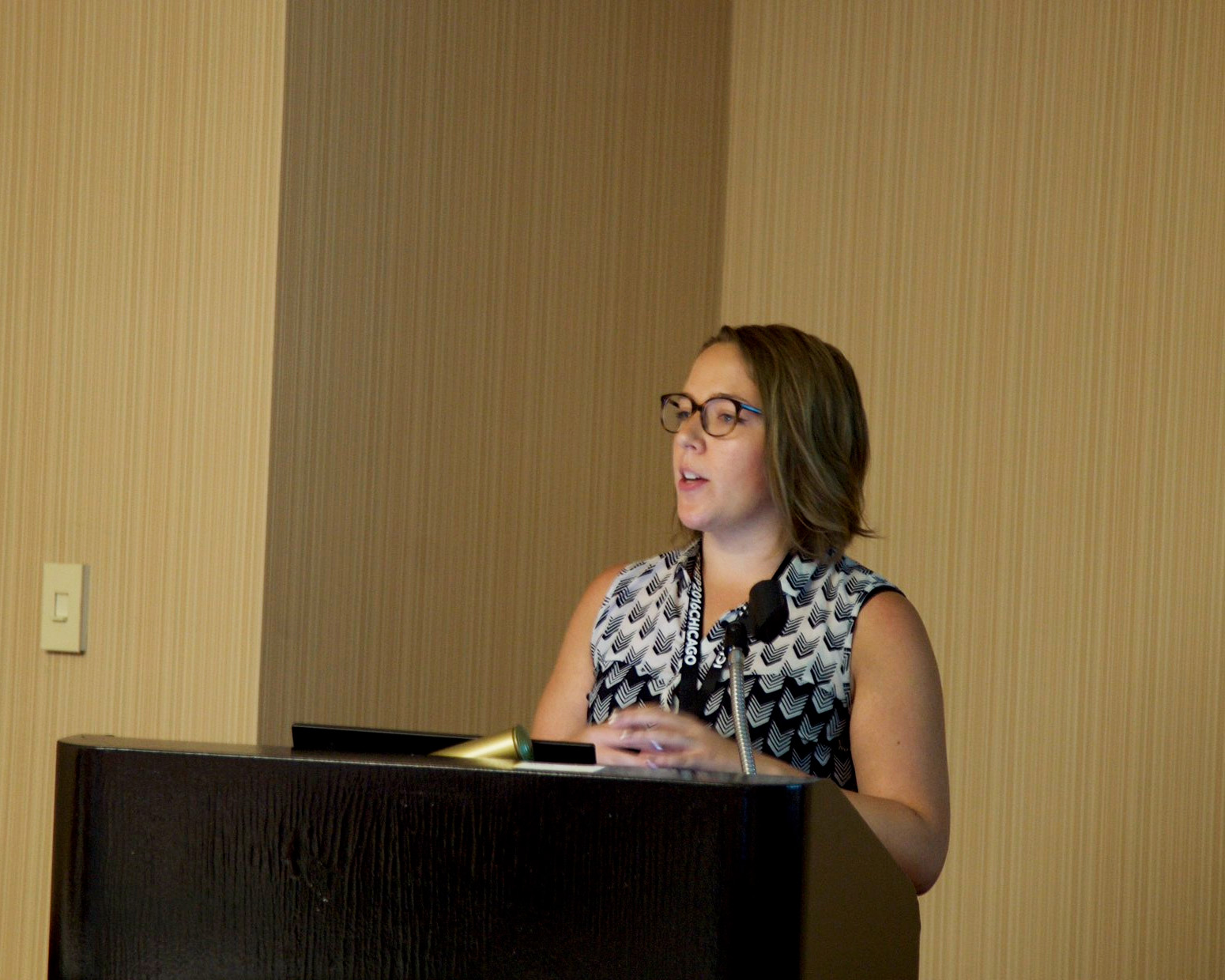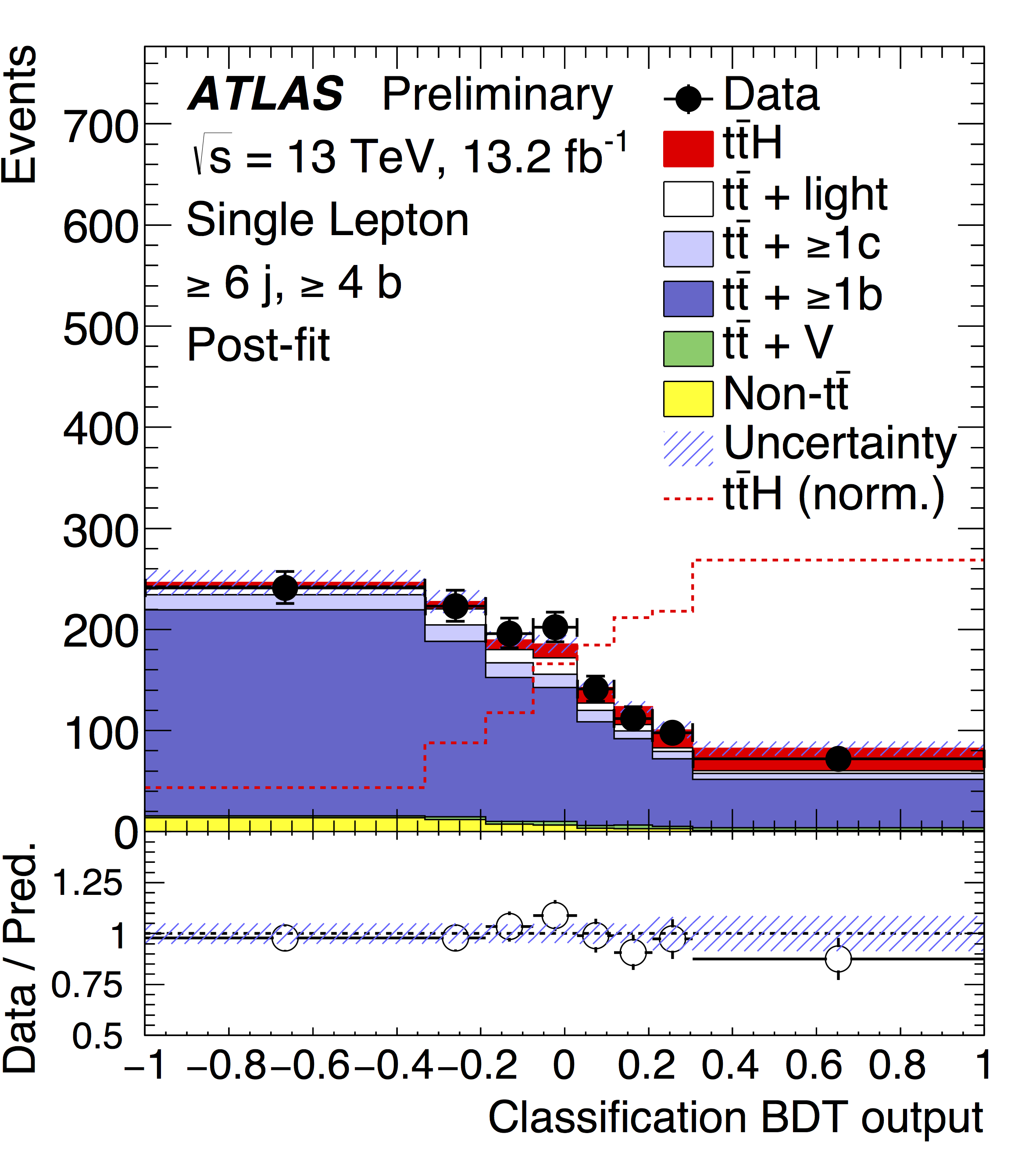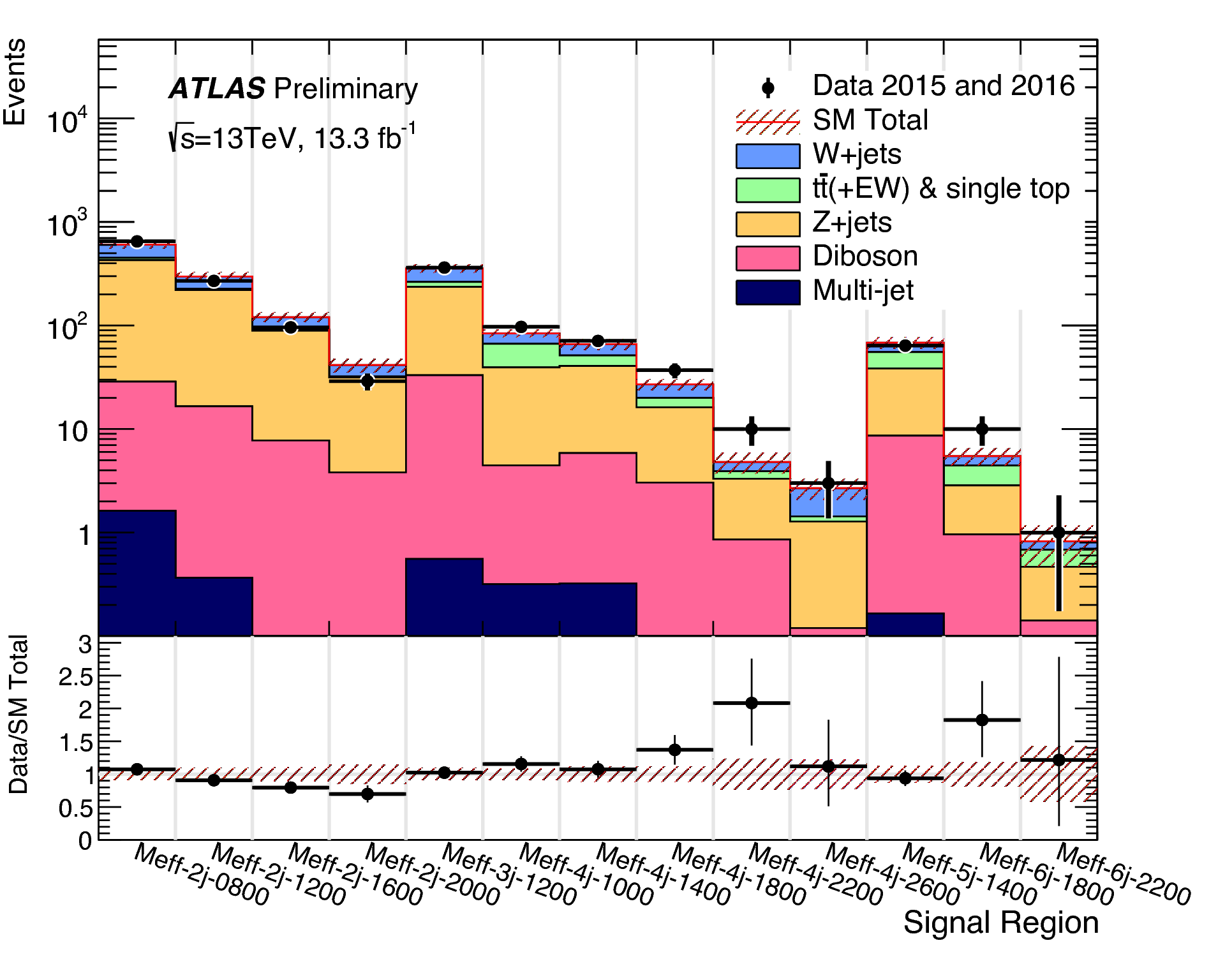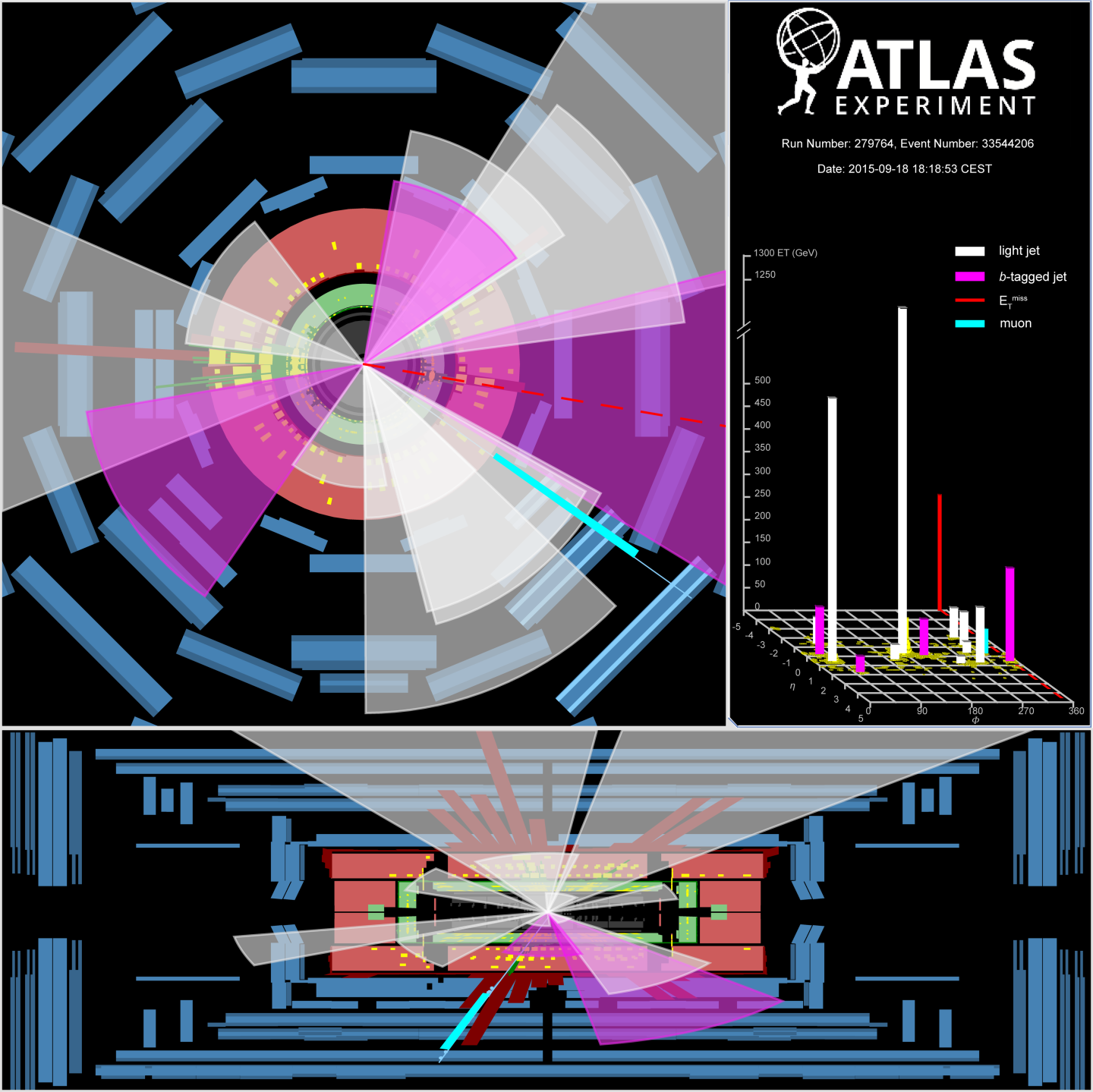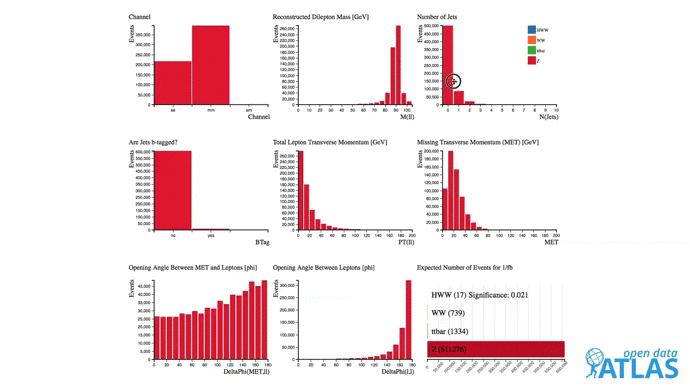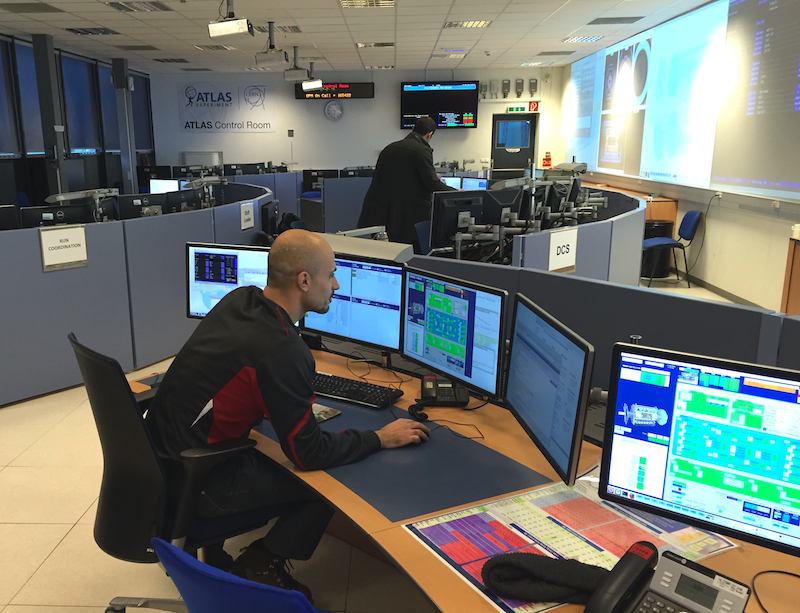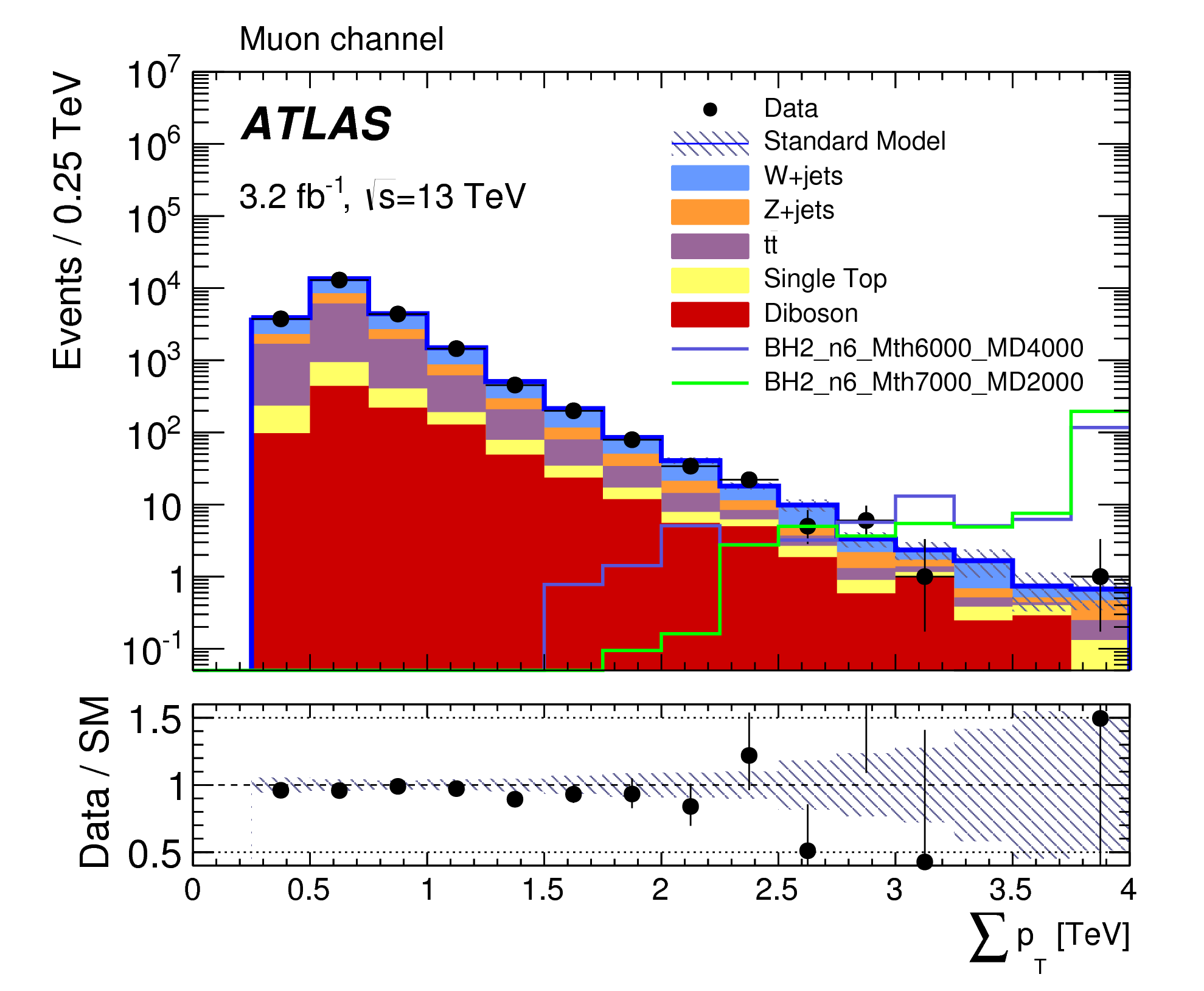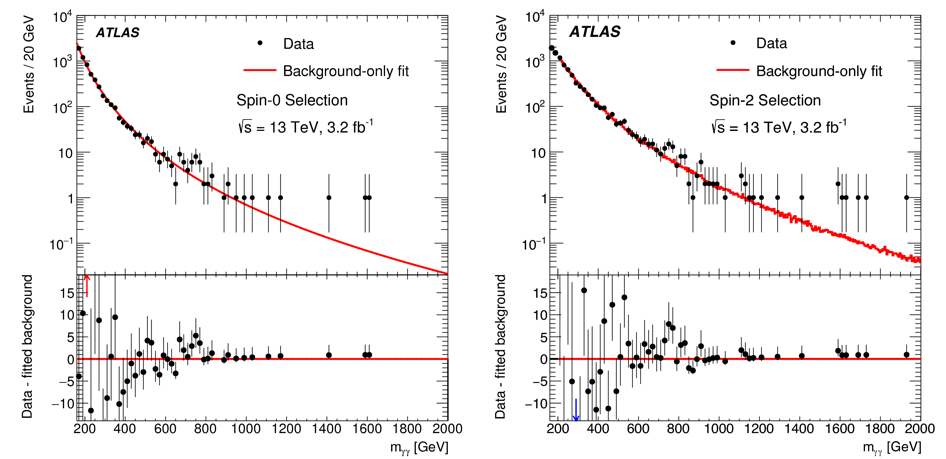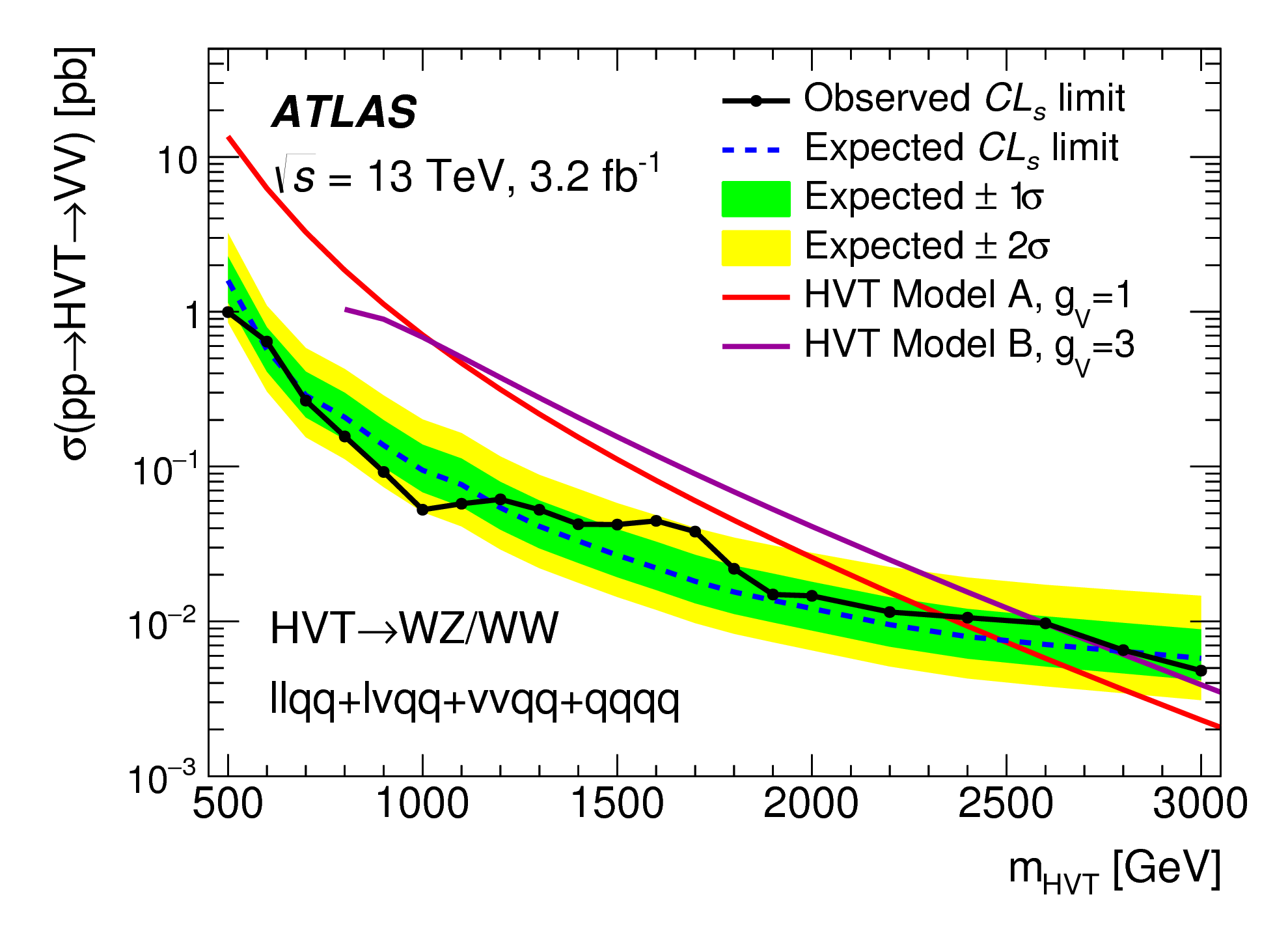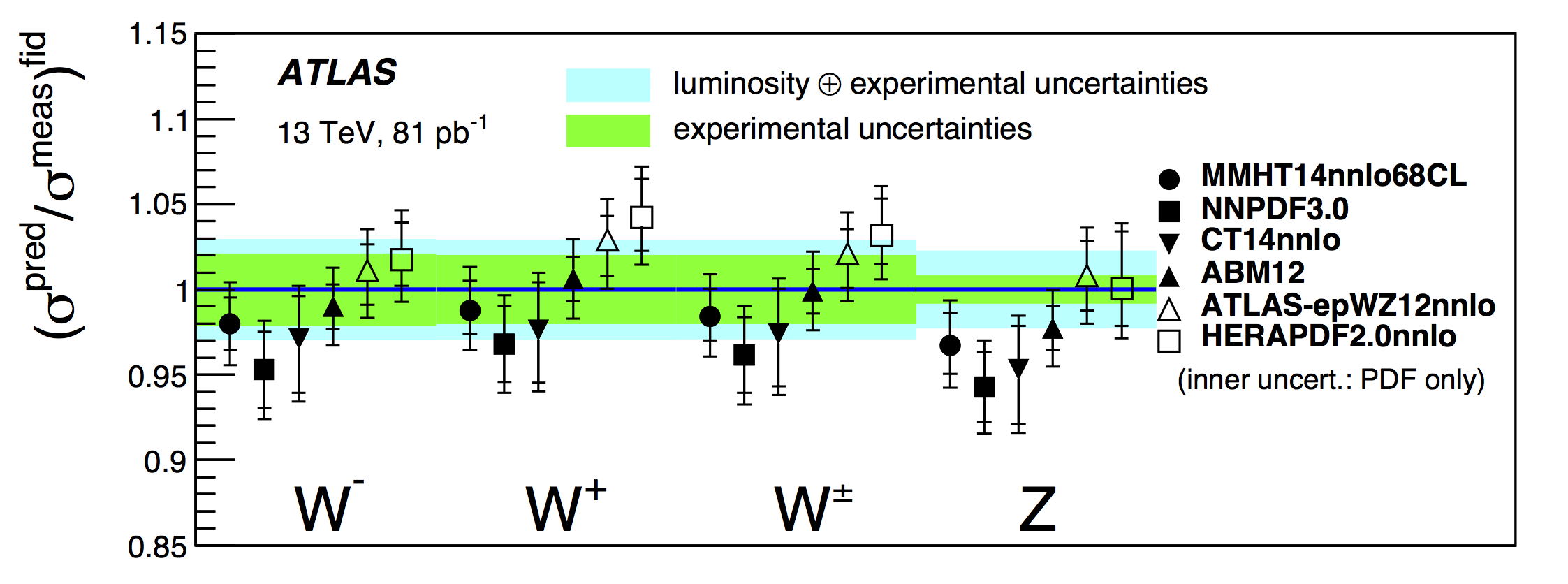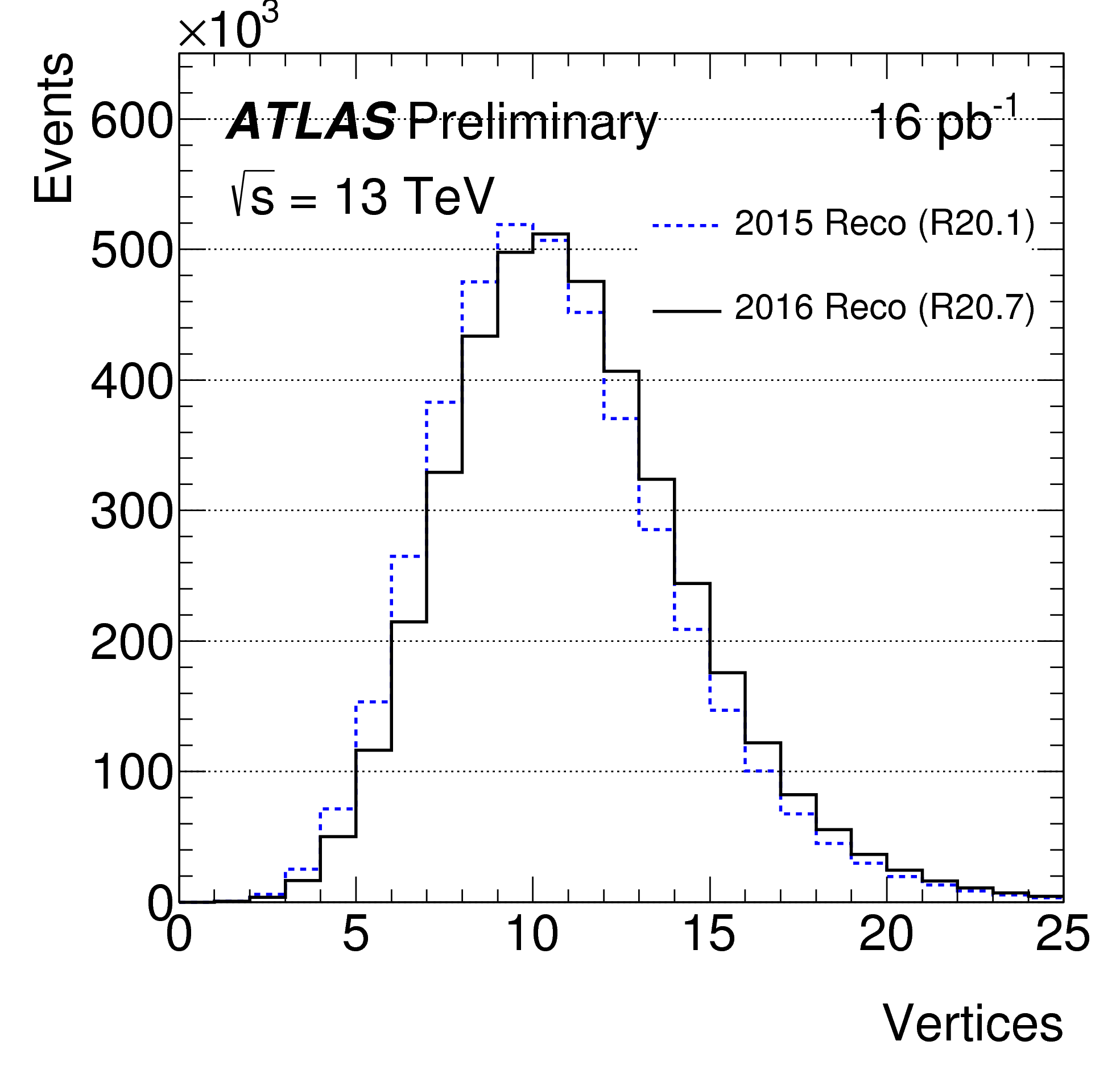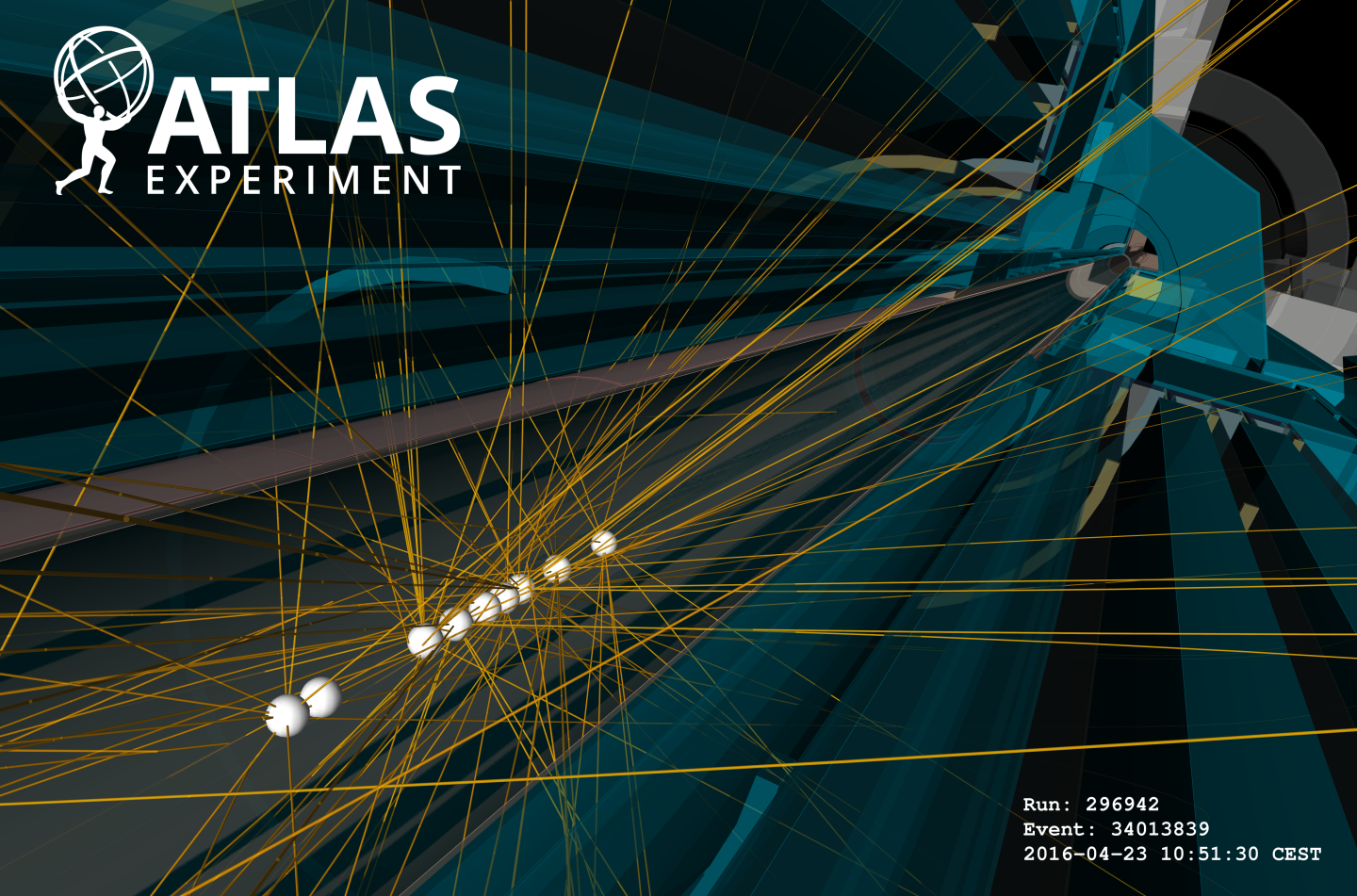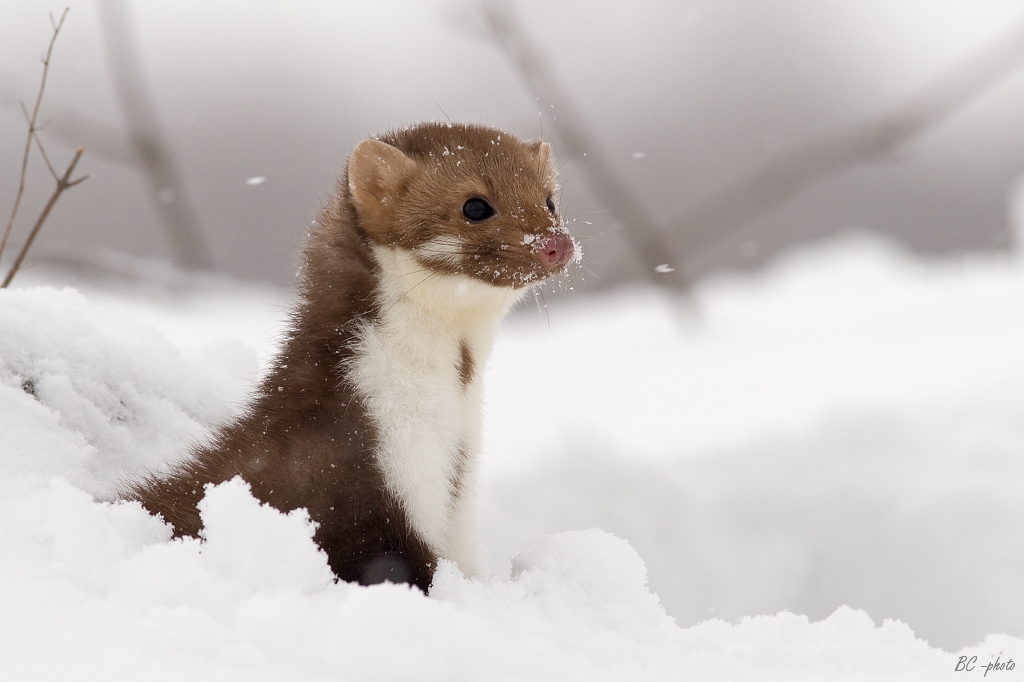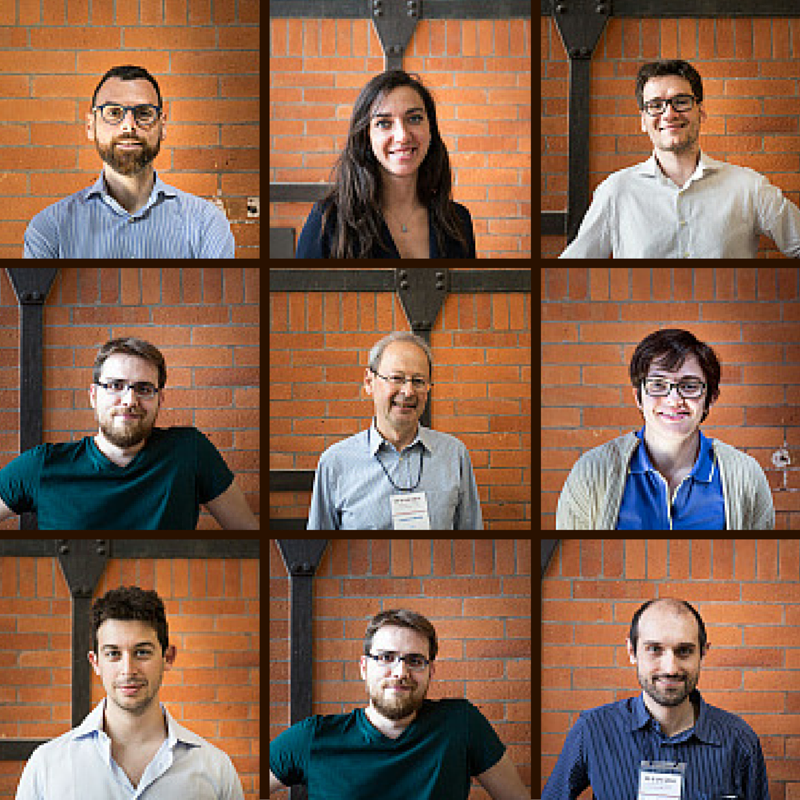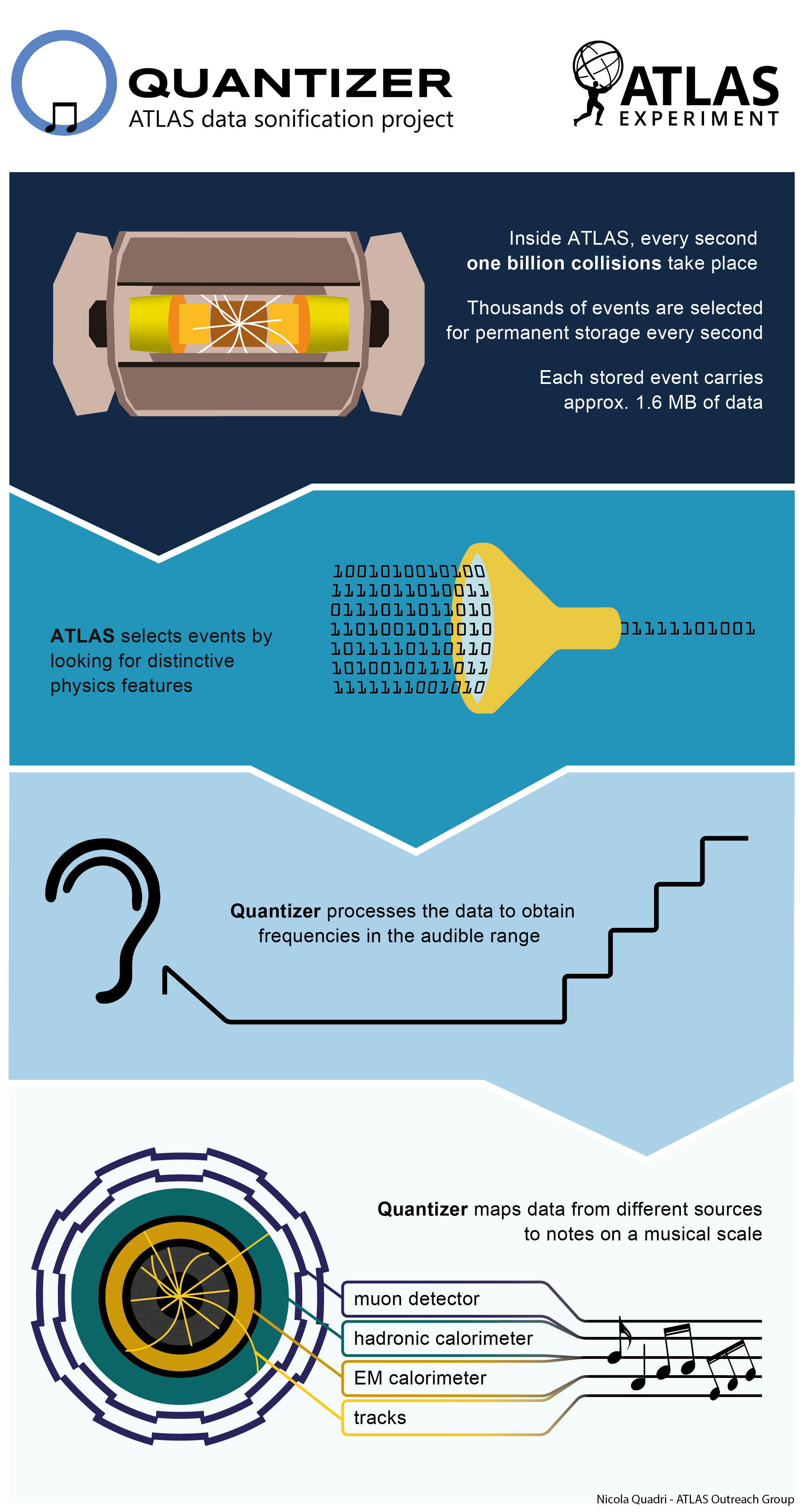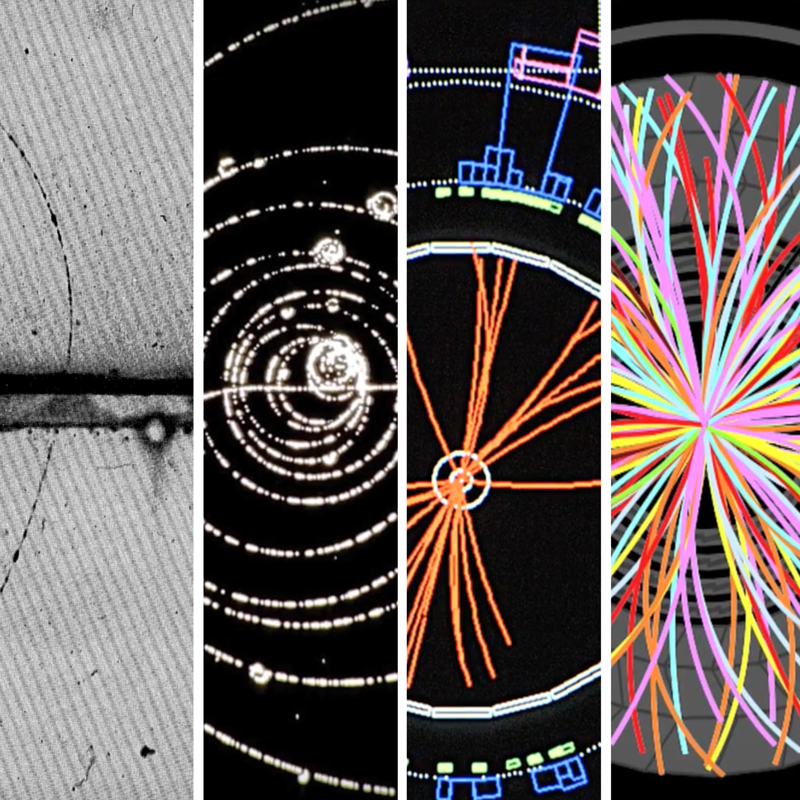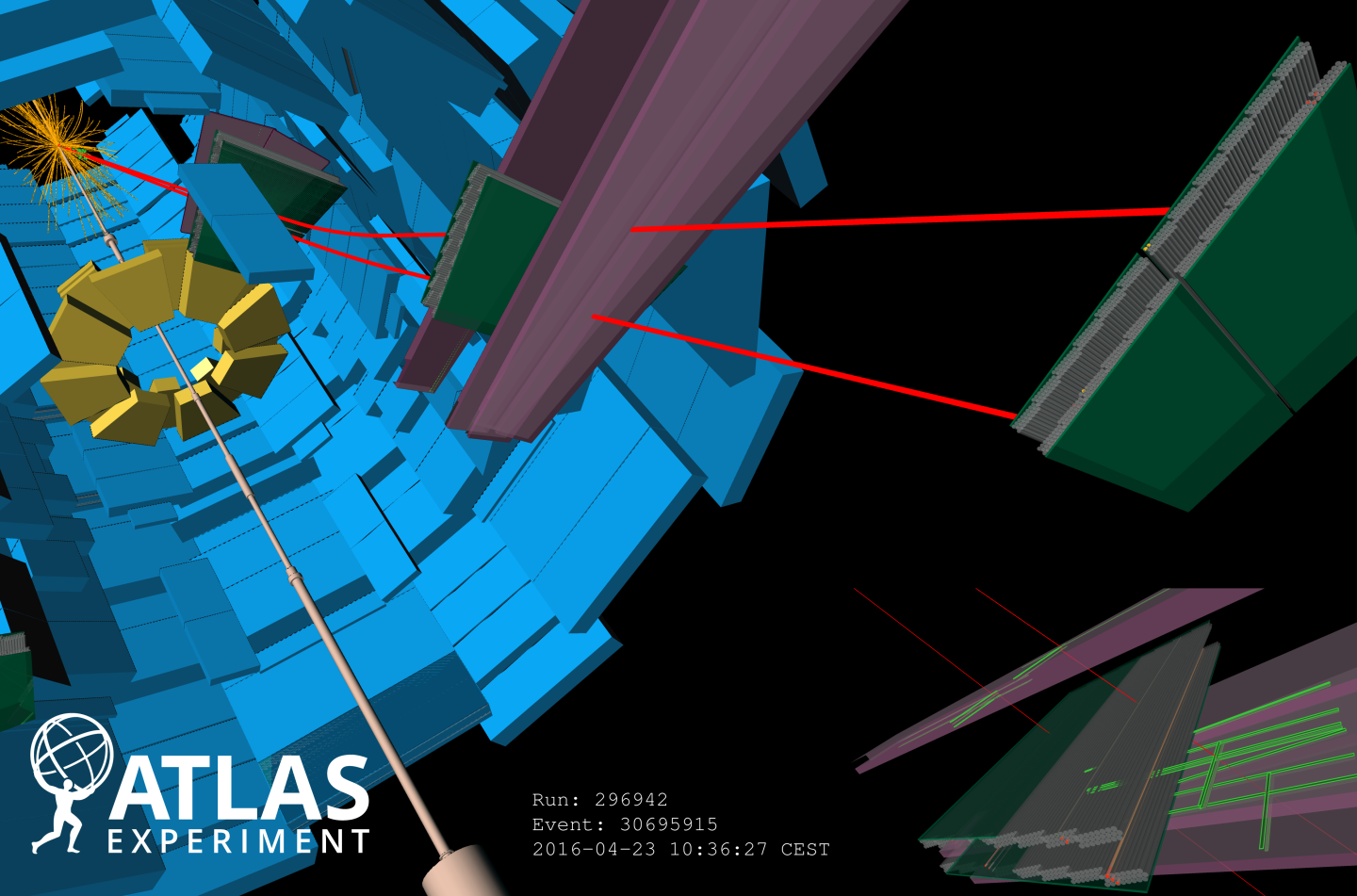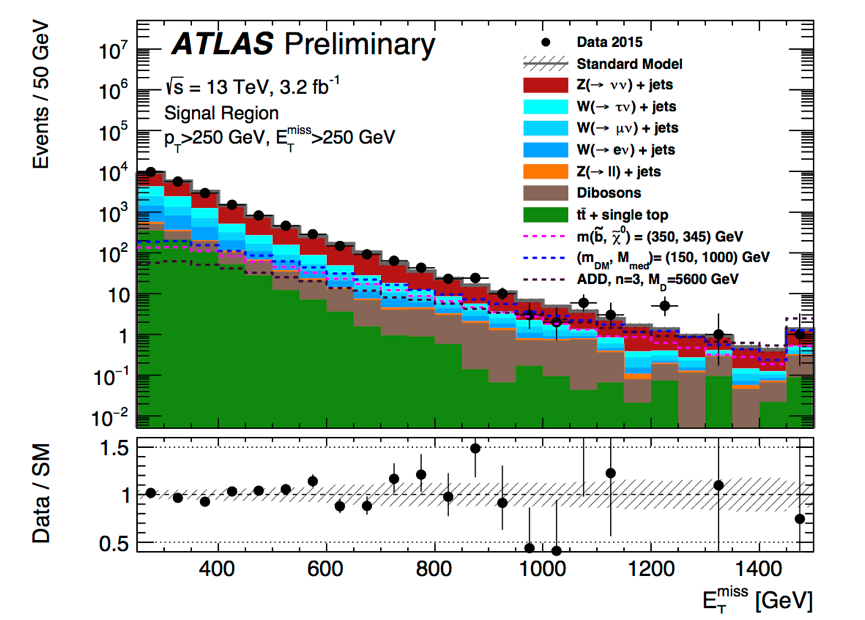ICHEP results presented with style!
For those of you with an affinity for Twitter, you’ll know that the ICHEP press crew have been utilising all of their dark arts to bring you the most interesting results as they’re presented at ICHEP 2016.
Blog |
Hunting for new physics with boosted bosons
Double the bosons, double the excitement
ATLAS has performed measurements of boson-pair production using data from 13 TeV proton-proton collisions that began in 2015. The cross-section (a measure of the production frequency) of the WW boson pair production was measured and was compared to a previous measurement in 8 TeV collisions.
High-mass di-photon resonances: the first 2016 ATLAS results
One of the highlights of last year’s physics results was the appearance of an excess in the search for a new particle decaying into two photons ("the di-photon channel"). New results in this channel were presented at the ICHEP conference in Chicago on Friday, 5 August.
ATLAS observes the Higgs boson with Run 2 data
The LHC’s jump in energy to 13 TeV in Run 2, together with the copious amount of collisions delivered over the last 12 months, has allowed the ATLAS experiment to collect a data sample that is more than equivalent to the one collected during Run 1.
Further progress in the quest for SUSY particles
ATLAS physicists have been eagerly searching the collected data for evidence of the production of the supersymmetric top quark (squark). Recent ATLAS results feature five separate searches for this elusive particle.
Hunting the origin of the top quark’s mass
The ATLAS experiment has been searching for the process in which a pair of top quarks is produced, where one is a “virtual” particle that emits a Higgs boson on the way to becoming a “real” particle. This process is referred to as ttH production after the particles that are produced.
Searching for new phenomena in final states with missing momentum and jets
The nature of dark matter remains one of the greatest mysteries in physics. While extraordinary, the Standard Model can not explain dark matter, whose existence is well established by cosmological measurements.
New ATLAS results to be presented at ICHEP
Results using record-breaking 2016 data will be presented at the International Conference on High Energy Physics (ICHEP) in Chicago, 3-10 August.
News |
Explore LHC data on new ATLAS educational platform
On Friday 29 July, the ATLAS experiment at CERN released the data from 100 trillion proton-proton collisions to the public. This includes the world’s first open release of 8 TeV data, gathered from the Large Hadron Collider in 2012, making it the most current high-energy physics open data.
News |
A busy day in the life of high energy physicist
My work involves analyzing data to try to understand how nature works at the most fundamental level, by searching for new particles and ways in which they interact. Specifically, I am looking at the top quark, which is the heaviest fundamental particle known to exist, with a mass of about 180 times that of a proton.
Blog |
Continuing the search for extra dimensions
For a long time, physicists have assumed that space-time has four dimensions in total – three of space and one of time – in agreement with what we see when we look around us. However, some theorists have proposed that there may be other spatial dimensions that we don’t experience in our daily lives.
Di-photons in the spotlight
The ATLAS collaboration has now released the final results on the search for new physics in the di-photon channel using 2015 data.
Something went bump in the night
ATLAS has published hundreds of studies of LHC data, with the Higgs boson discovery being perhaps the best known. Amongst the Run 1 searches there was one which stood out: the diboson excess.
A peek inside the proton…
When the protons from the LHC collide, they sometimes produce W and Z bosons, the massive carriers of the weak force responsible for radioactive decays. These bosons are produced in abundance at the LHC and ATLAS physicists have now precisely measured their production rates using 13 TeV proton-proton collision data recorded in 2015.
Weighing in on the top quark mass
ATLAS has released a new precise measurement of the mass of the top quark, the heaviest known elementary particle.
Stacking the building blocks of the 2016 ATLAS physics programme
2016 is set to be an outstanding year for the ATLAS experiment and the Large Hadron Collider. We’re expecting up to 10 times more data compared to 2015, which will allow us to make precise measurements of many known physics processes and to search for new physics.
ATLAS to present new results at LHCP conference
The Large Hadron Collider Physics (LHCP2016) conference kicked off today in Lund, Sweden. Held annually, the LHCP conference is an opportunity for experimental and theoretical physicists to discuss results from across the high-energy physics community. From Standard Model Physics and Heavy Ion Physics to Supersymmetry and other Beyond Standard Model investigations, the conference unites the disciplines to examine recent progress and consider future developments.
News |
An insider view of the "marten affair"
Friday morning, 29 April 2016: what was expected to be a productive shift turned out to be very different.
Blog |
Spring celebrations in Pisa as the LHC restarts
PP@LHC is an Italian conference with important contributions by foreign institutes, focused on the proton-proton physics performed at the LHC by the ATLAS, CMS and LHCb experiments. The aim of this year’s edition was not only to give an overview on the current status of LHC research, but to focus on future challenges with the upcoming new data.
Blog |
Make music with ATLAS data
From techno beats to classical melodies, from jazz swinging to pop and rock riffs – the ATLAS experiment can play them all. Thanks to Quantizer, a platform that translates ATLAS events into notes and rhythms, one of the most complex scientific instruments in the world will not only search for new physics, but also generate music.
News |
Picturing particles
Spring is now in full bloom at the ATLAS experiment which recorded the year’s first collisions for physics on Monday, 9 May. Event displays from these collisions were immediately streaming on the ATLAS live website, with some shared across social media platforms.
News |
ATLAS continues to explore the 13 TeV frontier
ATLAS is back and better than ever! With 13 TeV beams circulating in the Large Hadron Collider, the ATLAS experiment is now recording data for physics. This milestone marks the start of the second year of “Run 2” as ATLAS continues its exploration of 13 TeV energy frontier.
News |
The search for the dark side of the Universe
ATLAS scientists have just released a new publication with results based on an analysis of the early Run 2 data collected in 2015 using 13 TeV proton-proton collisions.
Wanted: SUSY particle still at large
According to classical electrodynamics, the electromagnetic energy (and mass) of a point-like electron should be infinite. This is of course not the case! The solution of the riddle is antimatter - the ‘vacuum’ around every electron is filled with a cloud of electrons and anti-electrons and the combined energy turns out to be finite.


